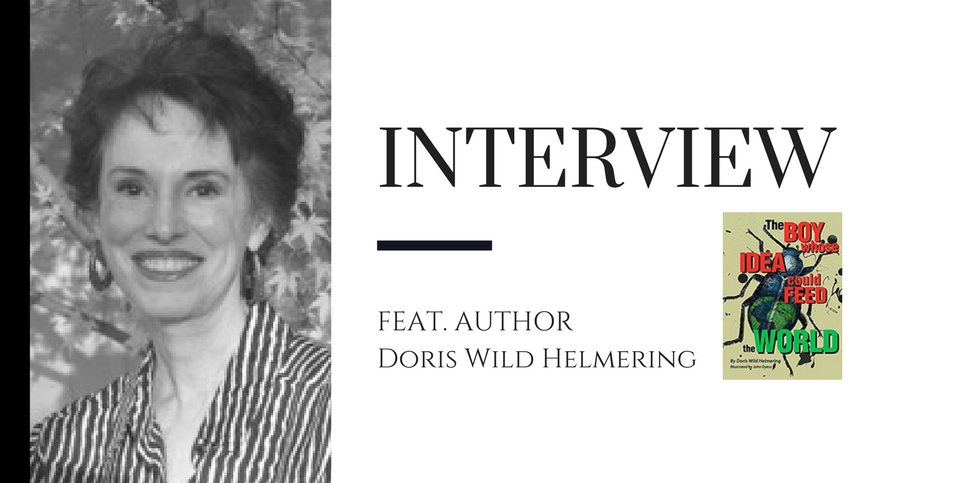Interview sponsored* by Doris Wild Helmering
The Children’s Book Review | July 26, 2017
Author Showcase
Doris Wild Helmering discusses The Boy Whose Idea Could Feed The World, a nourishing and enriching read that promises something for everyone.
Trevor Laurence Jockims: What do you think is the most important message of the book?
Doris Wild Helmering: The message I wanted to convey was that all kids are motivated. The task of a parent or teacher or counselor is tapping into what interests a seemingly unmotivated kid has, in order to get him moving in perhaps a more productive endeavor. The second message: You don’t have to be a great student to accomplish great things in life.
Of the numerous adversities Alex faces, which do you think is the most trying?
I think Alex’s long recovery at home after the accident, as well as how his appearance had changed (he now had a dimple on his cheek), were the most trying.
How much is Alex’s physical condition (and recovery) a metaphor for his emotional one?
When Alex was young, his father died, but he had little recollection of the event. But talking with his mom about his father’s death during his recovery was twofold: To help Alex come to terms with not having a father and to come to terms with his own pain from the accident. Years ago I asked a seventh grade class to write some of the losses they had experienced, trying to get a sense of loss at their age. I was astonished and saddened that almost everyone in the class had experienced a loss, and often a major one: the death of a sibling, parent, grandparent, relative, or divorce within the family and all the losses that entails.
Was any of the story based on real life events?
Yes. As a graduate student, I was a counselor at a boy’s home, so it was a natural for Mr. D to have been raised for part of his life in one. The part where his father, whom he never knew, came into the store where he worked and never identified himself, that happened to a close friend of mine. Sadly, the incident with the dogs was also based on a real-life event. The planting of a bottle garden, I did that many years ago with my husband, and I also like to roam around in junk stores like Alex’s family.
Why crickets? Has the question of food shortage interested you for a while?
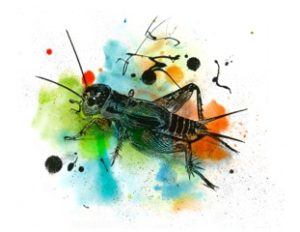 Years ago, I had read that you could eat crickets. So when I was working on the book, I started exploring what bugs people eat in other parts of the world. I got so interested that I visited a cricket farm in Florida. And what an education I got! I incorporated that experience and had Alex and his family and Mr. D visiting a cricket farm and then, of course, Alex’s entire class raising crickets as part of their class science project.
Years ago, I had read that you could eat crickets. So when I was working on the book, I started exploring what bugs people eat in other parts of the world. I got so interested that I visited a cricket farm in Florida. And what an education I got! I incorporated that experience and had Alex and his family and Mr. D visiting a cricket farm and then, of course, Alex’s entire class raising crickets as part of their class science project.
Regarding food shortage: Ever since I was a little girl, I’ve been conscious of what a terrible thing it is not having enough food to eat. When my mother was growing up, she didn’t have enough food, and I think her talking about going to bed hungry stuck with me.
Are there plans to publish another book that continues Alex’s adventures?
Yes, I have the story line and this time not only Alex, but also several of his classmates will take center stage.
How important was your own counseling practice to the development of the very convincing character in the book, particularly Alex and Mr. D?
I’ve been a counselor for many years so I think the counseling process that took place between Mr. D and Alex was similar to what actually goes on when I see a kid in counseling. So I would say it was essential.
How is the style of the illustrations connected to the story?
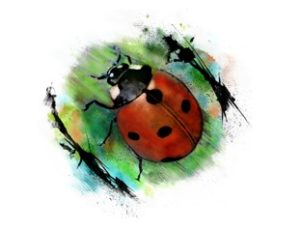 I’ve known John Dyess, the illustrator, for many years and have admired his work. So I was delighted when he agreed to illustrate the book. When I look at John’s work, I feel a connection: whether an illustration of a beautiful trout about to take a hook for Field & Stream or a bunch of guys playing basketball. That’s what I wanted the kids to feel when looking at the various bugs – a connection. When I first saw the illustrations for the book, I was blown-away.
I’ve known John Dyess, the illustrator, for many years and have admired his work. So I was delighted when he agreed to illustrate the book. When I look at John’s work, I feel a connection: whether an illustration of a beautiful trout about to take a hook for Field & Stream or a bunch of guys playing basketball. That’s what I wanted the kids to feel when looking at the various bugs – a connection. When I first saw the illustrations for the book, I was blown-away.
Have you tried eating crickets?
Actually I have. I’ve also eaten worms. How could I talk to kids about a book that has the potential of feeding the world and not have tasted some crawly cuisine myself? You can buy edible crickets and worms on the Internet. Dare I say, you too should take the plunge and try a handful of crickets or some crunchy worms. Believe me, you’ll catch the attention and admiration of a lot of kids.
###
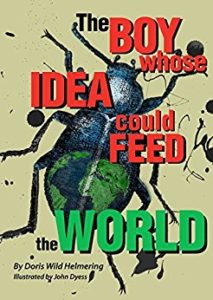 The Boy Whose Idea Could Feed The World
The Boy Whose Idea Could Feed The World
Written by Doris Wild Helmering
Illustration by John Dyess
Publisher’s Synopsis: Blowing off school work, being harassed by a bully and barely surviving a biking accident, 12-year-old Alex, while recuperating at home and working on a homework assignment, learns that bugs are eaten in many parts of the world and becomes interested in nutritious edible bugs. At the same time Alex discovers for himself the secrets of motivation.
While visiting a cricket farm where ten million crickets are being raised and seeing a plastic tub of super-worms just waiting to morph into edible beetles, leads Alex and his older brother Aiden to raising earthworms in their bedroom, cooking up bug recipes with family and friends, and along with his entire class, designing a science project unlike any the school or the town has seen. The press picks up on the story, a clip goes viral, and Alex is signing a contract for his high protein bug bars. With sales skyrocketing, he and his brother are off to Kenya for the opening ceremonies of a food factory designed to produce environmentally friendly, inexpensive and tasty food products to cure hunger and feed every human on this planet.
Written to entertain and encourage outside the box thinking and a never- give-up attitude, this book not only inspires but imparts a sense of “one for all, and all for one” among family members, students and staff.
An added bonus: Specific instructions for making a bottle garden, raising earthworms for fun and profit, a repeatable science project for an entire class, fun information on bugs and their talents, and a quick lesson on how to grunt worms.
Praise: “A book that promises something for everyone, from science education, real-world discussions of motivation, insight into insect protein, and a touching portrait of a family coming together, The Boy Whose Idea Could Feed The World is truly a nourishing and enriching read!” —The Children’s Book Review
Ages 8-12 | Publisher: Doris Wild Helmering | 2017 | ASIN: B071SKRMLF
Available Here:
Discussion Guide
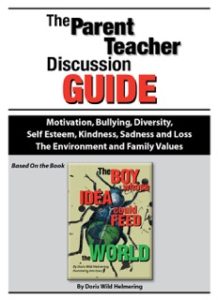 Also available on Amazon is The Parent Teacher Discussion Guide, which is exclusively available for free download here on The Children’s Book Review.
Also available on Amazon is The Parent Teacher Discussion Guide, which is exclusively available for free download here on The Children’s Book Review.
Bullying, diversity, how to motivate a seemingly unmotivated kid, family values and school values, sadness and loss, self-image and self-esteem, a philosophy of kindness and what a child might want to be when he or she grows up are all topics addressed in, “The Parent Teacher Discussion Guide.” What I had hoped to get across was, “Hey, kid, you’re not alone in the way you think and feel.” Most middle graders have similar questions and are dealing with almost identical issues as they move through grade school.
Excerpts from the middle grade book, “The Boy Whose Idea Could Feed the World” are included as a springboard to start the conversation. As these discussions unfold I believe you’ll discover quite a lot about how your middle grader thinks and feels. If these discussions take place in a classroom, it will quickly become evident that many of their classmates have similar questions, struggles and concerns.
My philosophy: Throw a kid the ball, step back, listen and be reassured they will not only catch the ball but run with it. Never have I been disappointed in how honest, perceptive, candid and bright middle graders can be given the right prompts in a safe environment.
[mkd_button size=”” type=”” text=”Click Here to Download the Guide Free” custom_class=”” icon_pack=”font_awesome” fa_icon=”” link=”https://www.thechildrensbookreview.com/wp-content/uploads/2017/07/guidebook1D-1.pdf” target=”_self” color=”” hover_color=”” background_color=”000000″ hover_background_color=”fb4c35″ border_color=”” hover_border_color=”” font_size=”” font_weight=”” margin=””]
About the Author
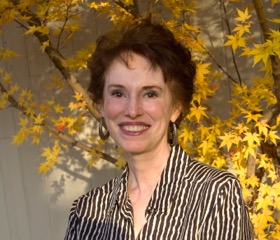 Doris Wild Helmering is a marriage and family counselor in St. Louis, MO in private practice. She has written numerous self-help books, two children’s books, one middle grade book and numerous booklets, appeared on Oprah three times, had her own segment on television, her own radio show, consulted for a number of fortune five-hundred companies, and has logged over 51,000 hours doing individual, marital, group and family therapy.
Doris Wild Helmering is a marriage and family counselor in St. Louis, MO in private practice. She has written numerous self-help books, two children’s books, one middle grade book and numerous booklets, appeared on Oprah three times, had her own segment on television, her own radio show, consulted for a number of fortune five-hundred companies, and has logged over 51,000 hours doing individual, marital, group and family therapy.
www.doriswildhelmering.com | doriswildhelmering.wordpress.com
About the Illustrator
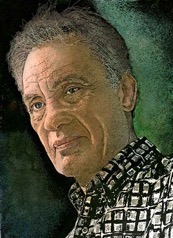
John Dyess
John Dyess is a painter, illustrator, photographer and teacher creating art and illustration for over fifty years. His commercial clients include many major corporations and companies including the National Geographic Museum, Anheuser-Busch, St. Louis Post-Dispatch and the St. Louis Baseball Cardinals. His illustration work has been published in many widely distributed magazines such as Field & Stream, Outdoor Life, Sports Afield and Bassmaster.
The Author Showcase is a place for authors and illustrators to gain visibility for their works. This interview was sponsored* by Doris Wild Helmering, the author of ‘The Boy Whose Idea Could Feed The World.’ Discover more great writing and illustrating artists in our Showcase.

